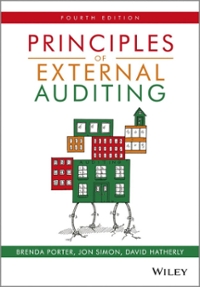Breitling Company manufactures two models of watches, the "Rollers" and "Ballers". The "Rollers" model has been produced since 2015 and the "Ballers" was introduced in early 2018. Breitling uses the same type of material and labour to produce both models although the designs are completely different. According to inventory records, the average cost of material is R3 050 per kilogram. Majority of the material is made up of precious metals which are subject to market price fluctuations. In order to hedge against market price fluctuations, Breitling has singed and agreement with suppliers to fix the price of materials for the next five years. The agreement is set to expire in four years' time and the prospects of renewal are very high. The company uses a team of specialised direct labourers to produce the watches. The team is made up of well-trained craftsman who graduated top of the class in jewellery design. Breitling pays each labourer R650 per hour. In addition, Breitling employs a team of elite supervisors who oversee the whole production plant. The team is made up of retired jewellery makers with an average experience of 40 years in the industry. Past experience has shown that each supervisor spends about 55% of their time supervising the "Rollers watches while the other 45% is dedicated to the "Ballers". The standard cost and quantities required to produce both watches is as follows: Per-unit data Rollers Ballers Direct materials 900g 1 2009 Direct labour hours 2.5 hours 3.5 hours Breitling has a allocated a budget of R850 000 per annum for supervision Supervisors are paid a fixed monthly salary. The 7 000 hours of supervison available is deemed sufficient to oversee the production of both watches. Production of both watches is done using a sophisticated machine imported from China. The machine is operated at a direct cost of R19 per hour. The machine has an operating capacity of 96 000 hours per annum. In addition, indirect costs incurred in servicing a the machine amount to R250 000 per annum. Breitling uses traditional costing system to allocated overheads to products. Overheads are allocated based on machine hours. The following additional data relating to annual overhead costs were collected: Activity center Cost driver Traceable costs Soldering Number of solder joints R471 000 Shipments Number of shipments R430 000 Quality control Number of inspections R620 000 Machine set-ups Number of set-ups R375 000 Breitling CEO, Solly Modiba, suggested that the company should concentrate its marketing resources on the "Rollers" and begin to phase out the "The ballers" model. Amanda Mhlongo, the new accountant, suggested that an activity based costing analysis must first be run to get a better picture of the true manufacturing cost. However Solly is of the opinion that activity based costing is a waste of time and resources as the decision could be taken based on the concept of relevant cost and revenues. According to Solly, Ballers should be closed as it consumes 60% of the machine's available time while its selling price per unit is below that of Rollers. Rollers consumes the remaining machine time. The following additional information was provided: Activity Number of solder joints Number of shipments Number of inspections Number of set-ups Number of Events Rollers Ballers 592 500 192 500 8 100 1 900 28 100 10 650 8 000 7 000 Total 785 000 10 000 38 750 15 000 The "Rollers" is sold for R10 000 a piece whilst the "Ballers sells for R8 000 a piece. It is anticipated that the company will produce a total of 14 750 watches per annum with Rollers production units being 36% more than that of Ballers. REQUIRED: uestion 13 PRE-SEEN 5: Assuming that the Manufacturing overhead per unit for Rollers are R225.97, calculate the Total Manufacturing Cost per unit R......... Question 12 PRE-SEEN 5: Assuming the total cost for Ballers is R1 074 865, calculate the cost per unit of Ballers using ABC










